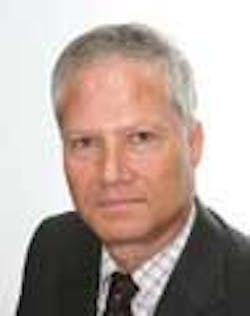EnQuest is forging ahead with Kraken, the second full-scale heavy oil field development in the UK northernNorth Sea. Britain's government approved the $6.44-billion project, which will provide EnQuest its sixth production hub in the sector. The location is 125 km (77 mi) east of the Shetland Islands.
Development will take in two separate heavy oil structures which have undergone intensive appraisal drilling over the past few years. Both benefit from the government's recently introduced tax breaks for heavy oil. Malaysian contractor Bumi Armada Berhad is supplying the production vessel and will also act as duty holder for the facility, its first such arrangement in the UK North Sea. This will be one of the UK's largest FPSOs to date, EnQuest added, with production capacity of more than 50,000 b/d.
Late last year ConocoPhillips started production from the Jasmine field in the central UK sector. This was the largest-scale development to come onstream anywhere in the North Sea in 2013, and provides ConocoPhillips with a second gas/condensate hub, 6 mi (9 km) west of the Judy/Joanne facilities. The company discovered the high-pressure/high-temperature Jasmine field in 2006 and opted for a three-platform development and multi-phase pipeline, all connected to the Judy complex. At peak, the new facilities can deliver 140,000 boe/d.
This should provide a tonic to UKoffshore production, which according to Chancellor George Osborne is set to stagnate between now and 2018, despite record levels of investment in new field developments. However, industry association Oil & Gas UK disputed Osborne's budget statement, claiming that production would veer upward in early 2015. CEO Malcolm Webb added: "With up to an estimated 24 Bbbl still to be recovered, there is a strong future for the [UK] North Sea, but as a mature basin, this will require, amongst other measures, an encouraging fiscal regime if the recovery of our oil and gas resource is to be maximized."
Chevron will not be rushed over Rosebank
Two other projects that have benefited from new allowances still face uncertain futures. The Chevron-led Rosebank, west of Shetland, is the UK's deepest-water development to date - 1,100 m (3,609 ft) - and in potentially the harshest-ever conditions. Chevron and its partners awarded Hyundai an engineering, procurement, and construction contract for a newbuild FPSO last April, and Worley -Parsons Intecsea has performed front-end engineering design (FEED) for both the floater and the subsea infrastructure. According to field analysts BritBoss, project costs could be in the £3.8 billion to £5.1 billion ($6.2 billion to $8.3 billion) range.
In response to press reports of second thoughts, Chevron responded that FEED work continued and the partners were still working to optimize the development solution. However, the focus should be on making the right decisions that are not driven by schedules and timelines, the company added.
Statoil had been due to submit a development plan for the Bressay heavy oil field in the East Shetland basin by the end of last year. This was assumed to be a lookalike of the company's nearby Mariner project, but the operator and partner Shell have decided to re-evaluate their preferred concept. Statoil said extended well data from Xcite's nearby Bentley field, which is similar to Bressay, suggests there is scope for an alternate, simplified concept along with improvements in reservoir drainage. The partners are in dialogue with the UK Department of Energy and Climate Change about the delay and the associated need for a license extension. Bressay had been due to come onstream in 2018, a year after Mariner, but there is no new timeline, Statoil said.
Statfjord A gains life extension
In the Norwegian North Sea, Statoil and partners ExxonMobil and Centrica have decided to keep theStatfjord A production platform in service until 2020. This is Norway's longest-serving fixed offshore installation, which began operating in November 1979. Statoil's original goal was to recover 40% of the Statfjord field's oil reserves, with new techniques later lifting the threshold for recovery to 60%. The field was then depressurized and now produces mainly gas, exported to the UK and continental Europe.
Statoil is currently targeting 74% recovery from Statfjord and continues to drill new wells, with 10 planned during 2014. To date the field has produced more than 4.7 Bboe.
Another relatively long-server is the Njord A semisubmersible platform in the Norwegian Sea. This has been modified in recent years to tie in reserves from satellite fields in the area. Last year, however, inspection revealed a need for reinforcements to the deck structure, forcing the platform to be shut down, with no resumption foreseen until the spring.
According to partner Faroe Petroleum, there are substantial oil, gas, and condensate resources that could be developed either via infill drilling on the Njord field or through exploiting nearby discoveries such as the recent Snilehorn or third-party fields in the area. The partners are reviewing longer-term options, which could include building and installing a replacement Njord A platform or FPSO.
More oil proven in Johan Castberg area
Statoil has broken its run of below-par exploration wells in the Johan Castberg area of the Barents Sea. Following two small gas finds of questionable value, the semisubmersibleWest Hercules discovered oil and gas in the Skavl structure in license PL532, 240 km (149 mi) northwest of Hammerfest. Recoverable oil volumes appear to be in the 20-50 MMbbl range, but perhaps more importantly, the well confirmed a new play model in the Fruholmen formation.
This year Statoil plans further exploration drilling in the region with the aim of proving up more reserves for the Johan Castberg area development.West Hercules was due to spud the Kramsno prospect last month, 16 km (9.9 mi) north of Skavl, with another well to follow on the Drivis structure.
In the UK North Sea, Dana Petroleum has scored drilling successes in two sectors. The jackupNoble Lynda Bossler encountered gas in a Rotliegendes-age sandstone reservoir in the Pharos field in the southern gas basin. The location is close to the 2010 Platypus gas discovery. In the Outer Moray Firth, the semisub Ocean Nomad proved oil while drilling in a lower Cretaceous sandstone reservoir in the Liberator prospect.
About the Author
Jeremy Beckman
Editor, Europe
Jeremy Beckman has been Editor Europe, Offshore since 1992. Prior to joining Offshore he was a freelance journalist for eight years, working for a variety of electronics, computing and scientific journals in the UK. He regularly writes news columns on trends and events both in the NW Europe offshore region and globally. He also writes features on developments and technology in exploration and production.



